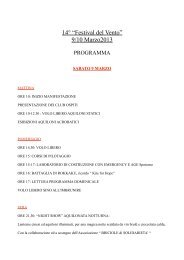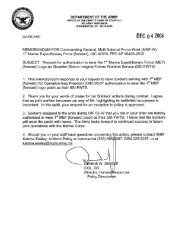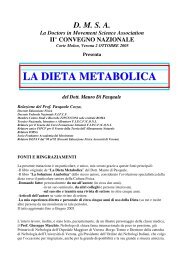Science vs. religion : what scientists really think - File PDF
Science vs. religion : what scientists really think - File PDF
Science vs. religion : what scientists really think - File PDF
You also want an ePaper? Increase the reach of your titles
YUMPU automatically turns print PDFs into web optimized ePapers that Google loves.
Suppression or Engagement 79I <strong>think</strong> that it has no real place in my interactions with students. For example,I had one fellow who was a very devout Christian, and he was always tellingme <strong>what</strong> to do and how to live, and he was sort of evangelical, and how do Ihandle that? Well I would just make jokes, because it was just so silly. You haveto diffuse that kind of energy. It doesn’t <strong>really</strong> have any place in the workingenvironment.Since this chemist has no real language for talking about <strong>religion</strong> with his students,he does <strong>what</strong> he best knows to do; he avoids the situation by quicklydismissing it with either humor or the rhetoric of separation of church andstate.11It is not just anti- or nonreligious <strong>scientists</strong> who choose to suppress mentionof <strong>religion</strong> in their classrooms. An economist 12 I talked with currentlyteaches at <strong>what</strong> he described as an “aggressively secular institution.” Thisnature of his university is especially apparent to him, because he is Catholic.After converting to Catholicism as an adult, he taught for a short time at areligiously affiliated college. While he has been trying not to talk about <strong>religion</strong>at his current university, at the private, religious school, he “would havebeen comfortable talking about issues [related to <strong>religion</strong>, since] . . . all of thestudents were members of the same faith.” Students there would even have aprayer before class. In a public institution, however, he “just never would.” Heattributes his choice not to discuss <strong>religion</strong> to “institutional reasons”; in short,there is general discomfort about bringing <strong>religion</strong> into a pluralistic universityenvironment.SCRIPTS OF ENGAGEMENTOther <strong>scientists</strong>, particularly those whose fields—such as evolutionary biologyor sociology of <strong>religion</strong>—intimately overlap with matters of faith, try diligentlyto bring <strong>religion</strong> into the teaching environment. A small group of <strong>scientists</strong>within this category intentionally bring <strong>religion</strong> into their classes to model forstudents thoughtful ways of viewing the connections between science and faith.More often, however, these <strong>scientists</strong> bring in <strong>religion</strong> as a way of explaining tostudents how science either differs from <strong>religion</strong> or even disproves certain facetsof religious understanding. This is similar to the journalists and social <strong>scientists</strong>that <strong>religion</strong> scholar John Schmalzbauer discusses in People of Faith .They are not trying to proselytize. The engagement is much more subtle as theysimply try to connect their personal faith with their disciplines.
















